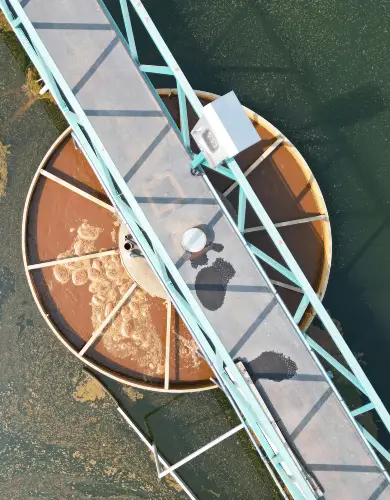IEA – International Energy Agency | Who are they?
The International Energy Agency has been around since 1973, and its purpose has evolved significantly since its inception. From oil security to pushing the world collectively to a more sustainable future, the IEA has changed dramatically over the years.
In this guide, we delve a little deeper into the IEA.
Who are the IEA?
The IEA stands for the International Energy Agency.
The International Energy Agency was founded in 1973 in the aftermath of an oil crisis. In 1973 and into 1974, some of the world’s biggest oil producers instituted an oil embargo on several western countries, including the UK and the United States. The ban caused oil prices to quadruple.
The IEA was established to prevent any considerable disruptions in the supply of oil internationally and to be a venue for collaboration and research into energy security issues.
However, in recent years, the IEA has now shifted its focus onto initiatives focused on renewable energy, environmental protection and preventing climate change. They also act as a policy advisor to emerging economies, supporting energy security and advancing clean energy.
The Agency’s mandate has broadened to provide analysis, data, policy recommendations and solutions to help countries ensure secure, affordable and sustainable energy for all.
Which countries are members of the IEA?
Currently, there are 31 members. Three countries are currently seeking full membership. These are:
- Chile
- Colombia
- Israel
The association members are as follows:
- Argentina
- Brazil
- China
- Egypt
- India
- Indonesia
- Morocco
- Singapore
- South Africa
- Thailand
As of March 2017 – India joined the IEA. This was a significant step for global energy governance. In 2022, Lithuania joined the IEA as its 31st member. The list of full members is as follows:
- Australia
- Austria
- Belgium
- Canada
- Czech Republic
- Denmark
- Estonia
- Finland
- France
- Germany
- Greece
- Hungary
- Ireland
- Italy
- Japan
- Lithuania
- Luxembourg
- Mexico
- Netherlands
- New Zealand
- Norway
- Poland
- Portugal
- Slovakia
- South Korea
- Spain
- Sweden
- Switzerland
- Turkey
- United Kingdom
- United States
What are the main focus areas of the IEA?
The main focus areas of the IEA currently are as follows:
- Promoting energy efficiency: The International Energy Agency helps governments realise the potential of energy efficiency by advising them on the policy’s development, implementation and impact. They track global policy progress in over 200 countries, regions and states.
- International collaborations: Collaborating with various international organisations to allow for affordable and sustainable energy systems.
- Data and statistics: The IEA prioritises data collection – they provide the most comprehensive source of global energy data prioritising quality, comparability, and alignment with agreed definitions and methodologies with the member countries.
- Training: The IEA offers training around various topics in different formats. The aim of the training is to educate participating countries for continual capacity building and building a two-way information exchange with them.
- Technology collaboration: The technology program run by the IEA aims to support the work of independent and international groups of experts. These experts work towards advancing the research, development and commercialisation of energy technologies.
- Energy security: Energy security is defined by the IEA as “the uninterrupted availability of energy sources at an affordable price”. There is two factors to this, long and short term.
- Long term is defined as “dealing with timely investments to supply energy in line with economic developments and environmental needs“.
- Short term is defined as “Focusing on the ability of the energy system to react promptly to sudden changes in the supply-demand balance”.
- Global engagement: Global engagement is engaging the member countries in global meetings and discussions to cooperate on long term energy plans.
- Industry engagement: This is where the International Energy Agency shares its industry insights to educate the association members and the general population.
- Programmes and partnerships: The IEA works with governments, agencies and organisations to deliver country-focused energy programs. A selection of programs they offer is:
- Clean Energy Transitions Programme
- Technology Collaboration Programme
- Energy Efficiency in Emerging Economies
- Electric Vehicles Initiative
- EVI Global EV Pilot City Programme
- The IEA Mobility Model
- An Affordable and Sustainable Energy System for Sub-Saharan Africa
- Global Commission for Urgent Action on Energy Efficiency
- Clean Energy Ministerial
- EU4Energy
- Digital Demand-Driven Electricity Networks Initiative
- Promoting digital demand-driven electricity networks: In order to address climate change, there’s a need for digital solutions to support power systems in transition.
Who funds the International Energy Agency?
A mix of sources funds the International Energy Agency. These sources include government funding, private funding and voluntary contributions.
IEA also receives “staff on loan” from some contributors.
Sustainable energy and water guides | AquaSwitch
At AquaSwitch, we have a multitude of guides on sustainability and green energy. If your business is looking to improve sustainability or use a form of green energy. Please have a read through some of our guides below:
- Biomass Energy
- Borehole water supply
- Climate change levy
- Geothermal energy
- Green energy
- Renewable energy for businesses
- Sustainable water supplies
You can also use our business energy comparison service to compare the latest business gas rates and commercial electricity prices.

